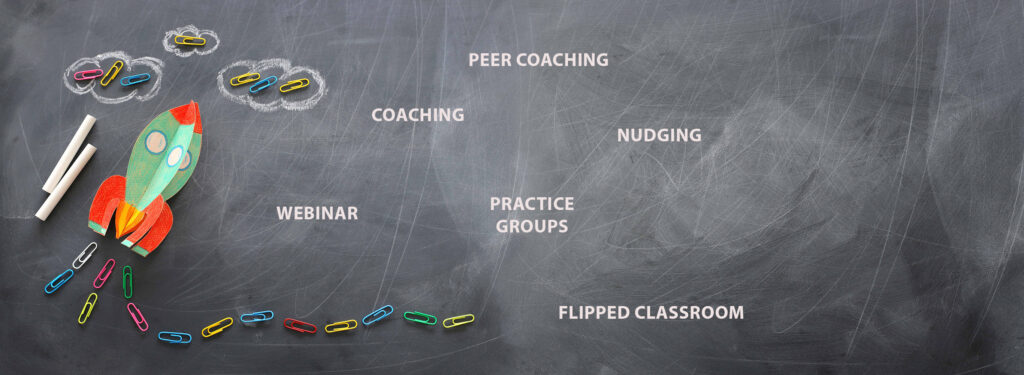
Learning Journey
Formats For A New Working World
Dr. Stephanie Metz
Away from school-based learning – towards independent and collaborative learning
We want to create impact in learning and development programs. Classic training or leadership curricula no longer served the purpose for us here. That is why we have implemented and experimented with learning journeys in many different companies. Learning journeys are a combination of different learning formats. They form a framework in which participants learn both independently and with each other. You design your own journey. In the attached PDF as a download, we have made available, how this can also happen successfully in the virtual space.
Challenge: Virtual Learning Journeys
Cognitive Overload – Virtual formats invite cognitive knowledge transfer – reflection of attitude issues and emotional work become difficult. Holding Attention – The participants are busy elsewhere! Virtual learning tempts people to get distracted and thus quickly lose their attention. Binge-Learning – The participants let themselves be sprinkled! Content is consumed without actively dealing with it and getting involved. Engagement and personal responsibility are missing. To meet these challenges, we work with different design approaches for virtual learning journeys.

Flipped Classroom – The theory and impulses for concrete topics are made available via various formats BEFORE a joint virtual meeting (e.g. in the form of readers, videos, podcasts). In this way, a common theoretical basis can be created in advance, which can be worked on in a self-directed manner, independent of location and time. The time spent together in the webinar can thus be used for experimentation, reflection and application.
Social Learning – Learning together, sharing experiences, and participating in the experiences of others must be consciously planned in the virtual space and specifically integrated into a learning journey. Properly designed, various social learning formats have an immense professional and interpersonal impact. For these formats to work virtually, very clear and detailed didactic instructions are important. We primarily use networking and peer group work here.
Analogue/Emotional Formats – In order to consciously address the relationship level in virtual learning journeys, we use analogue methods, e.g. picture stories. After reading an article, for example about the Growth Mindset, participants are given the task of finding pictures that symbolize the core of the theory. They then share these pictures with the group in the next webinar. On the one hand, this makes abstract concepts vivid and concrete, and on the other, people share something personal in the group. This creates an atmosphere of openness in which emotional aspects can also be shared. Another method that works in a similar way is storytelling. Participants prepare and tell a personal story about the topic of the learning journey.
Nudging – small nudges in the course of a learning journey – is proving to be a suitable method for maintaining the attention and engagement of participants throughout a virtual learning journey and thus increasing the effectiveness of learning. It is the necessary glue that holds the other elements together.
If you would like to delve deeper, you can find a more in-depth experience report on virtual learning journeys in the download here.
